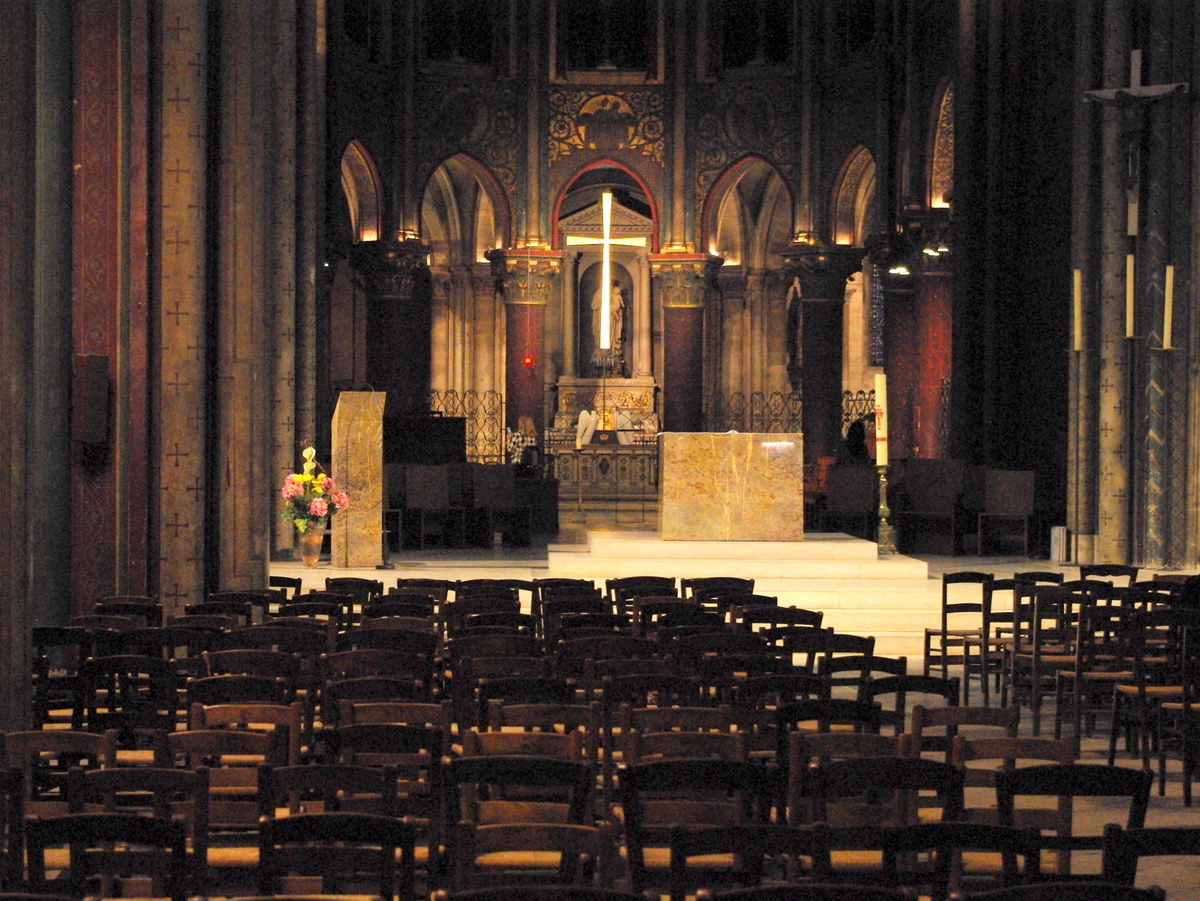The quarter of Saint-Germain-des-Prés takes its name from the old Benedictine abbey founded in the 8th century. Situated on the Left Bank in the 6th arrondissement of Paris, it is known for its cafés and for being the meeting place of Left Bank intellectuals and artists in the 1950s and 1960s. Today, the ancient bell tower of the church still watches over the vibrant and busy neighbourhood.
Situation Map of Saint-Germain-des-Près


Saint-Germain-des-Prés: a bit of history

The abbey of Saint-Germain-des-Prés was founded in 558 by Germain, bishop of Paris in an area that was outside of the city walls (‘prés’ is French for ‘meadow’). A small village started to grow around the abbey.
The territory of the powerful abbey extended to the Left Bank of the Seine covering today’s 6th and 7th arrondissements. Still, outside the city walls built by King Philip Augustus in the 12th century, the village grew to a population of 600.

Since the 17th century, intellectuals and the nation’s leading figures have met in the neighbourhood: the Encyclopédistes (a group of 18th-century writers who wrote the Encyclopédie including Denis Diderot, Jean le Rond d’Alembert), Benjamin Franklin, the Revolutionaries (Marat, Danton) and Napoleon.
The neighbourhood went through major urban planning in the mid-19th century when Baron Haussmann created two new thoroughfares: Boulevard Saint-Germain (1855) and Rue de Rennes (1853).

In the aftermath of the Second World War, Saint-Germain-des-Prés became the centre of Existentialism with Jean-Paul Sartre, Albert Camus and Simone de Beauvoir.
At the same time, writer, New-Wave film makers, actors and musicians (Juliette Gréco, Boris Vian, François Truffaut, Jacques Prévert, Marcel Proust) were associated with Saint-Germain-des-Prés.

About the Quarter of Saint-Germain-des-Prés

Covering a relatively small area on the Left Bank of the River Seine between Rue des Saints Pères and Boulevard Saint-Michel, the upmarket neighbourhood of Saint-Germain-des-Prés (6th arrt) refers to French intelligentsia and is well known for its plethora of art galleries, its café culture (Les Deux-Magots, Café de Flore), the revolutionary intellectualism (Jean-Paul Sartre, Simone de Beauvoir), French literature (Paul Éluard, Boris Vian, Albert Camus, Françoise Sagan), and New Orleans Jazz and Be-Bop music (Sidney Bechet, Miles Davis, Duke Ellington)…
A neighbourhood that has changed over the last decades

The last decades have seen the significant change take place in the neighbourhood of Saint-Germain-des-Prés. Until the 1970s, Saint-Germain did not have such a luxurious image, there were more families and a real village atmosphere as people went about their everyday lives. The neighbourhood progressively changed into a more upmarket fashionable area. Today streets are bordered with fashionable boutiques and smart interior designers replacing bookshops and grocery stores, drawing a large influx of international tourists. Over the last decades, these changes led to a discrepancy between the residential side and the new image of Saint-Germain, between those that live there and the thousands of tourists. This change has been criticised by many French artists: Guy Béart, Juliette Gréco, Alain Souchon and Léo Ferré.
The locals of Saint-Germain-des-Prés

With a population of 11,000 Germanopratins (residents of St Germain – a word in use since 1950), the neighbourhood of Saint-Germain-des-Prés is one of the most expensive real estate areas of Paris and one of the richest in terms of average income. Saint-Germain has a reputation of being dynamic, bohemian and intellectual. For many, the district houses many families with young people, beautiful apartments nicely set in an upmarket district. However amongst these preconceived clichés, many are quite far from reality:
- the district is losing its inhabitants,
- with its 820 buildings – most of them built before 1915, the housing stock is very unequal,
- many people suffer from loneliness,
- the population is getting older,
- a district with significant socio-economic disparities.
Sightseeing in Saint-Germain-des-Prés
The district of Saint-Germain-des-Prés is crossed by the large Boulevard Saint-Germain. Created in the mid-19th century by Baron Haussmann, it is 3km long and links the Pont de la Concorde to the Pont de Sully through three arrondissements: the 7th, the 6th and the 5th.
Streets and Squares

Many streets and squares give a typical view of old Paris with shady trees and old-fashioned street lamps: Place Saint-Germain-des-Prés in front of the historic church, the lively semi-pedestrianised rue de Buci, the charming and secretive rue de Furstemberg, and the short rue du dragon with 17th and 18th-centuries-old houses.
Rue de Buci:


Rue du Dragon:

Corner Rue du Dragon / Carrefour de la Croix-Rouge:

Rue du Sabot:

Cour du Commerce Saint-André is a curious little passageway built in 1776 which includes small boutiques and the famous Le Procope, one of Paris’ oldest restaurants:

Monuments
The neighbourhood includes some famous Parisian landmarks such as the church of Saint-Germain-des-Prés – Paris’ oldest Catholic sanctuary -, the neo-classical Saint-Sulpice church, the Institut de France, the Senate (Palace of Luxembourg) and the Luxembourg Garden, as well as a few monumental Hôtels Particuliers.
Interior of Saint-Germain-des-Prés Church:

The twin towers of Saint-Sulpice Church:

Townhouse in Rue de Seine:

The National School of Fine Arts:

The Odéon Theatre:

The Luxembourg Garden:

View of the Luxembourg Palace from the garden:

Cafés and Cinemas

Saint-Germain boasts many cinemas and a profusion of brassy cafés and restaurants whose terraces spread out on the pavement, some of them have become famous over the decades and centuries: Café Les Deux-Magots, Café de Flore, Brasserie Lipp, Le Procope…
Café Les Deux-Magots:

Café de Flore:

Brasserie Lipp:

Access to Saint-Germain-des-Prés

The neighbourhood of Saint-Germain-des-Prés is easily accessible by métro lines 4 (serving station ‘Saint-Germain-des-Prés’) and 10 (serving station ‘Mabillon’). Saint-Germain-des-Prés is a transport hub for buses servicing the Eiffel Tower, Notre-Dame, Montparnasse, Gare de Lyon and Bastille.




